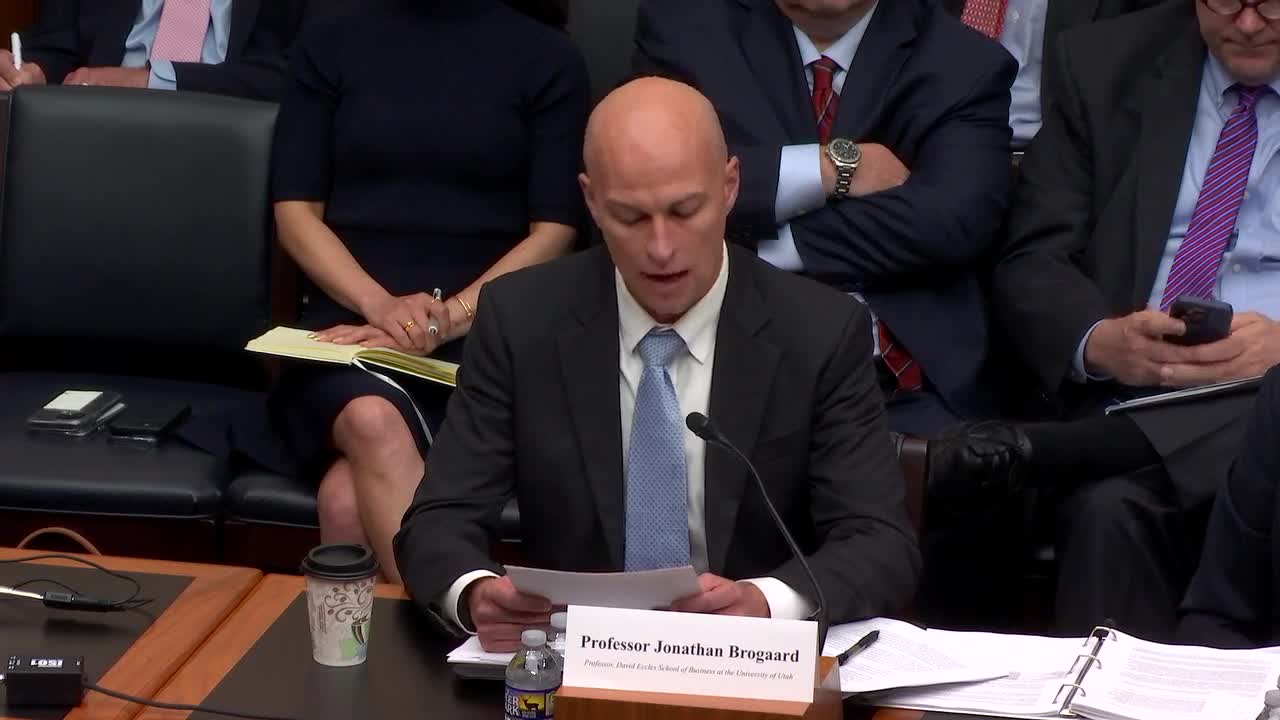SEC Proposals Risk Undermining US Equity Market Success
June 20, 2024 | Financial Services: House Committee, Standing Committees - House & Senate, Congressional Hearings Compilation

This article was created by AI summarizing key points discussed. AI makes mistakes, so for full details and context, please refer to the video of the full meeting. Please report any errors so we can fix them. Report an error »

During a recent government meeting, key stakeholders in the U.S. equity markets discussed proposed reforms by the Securities and Exchange Commission (SEC) aimed at reshaping the market structure, particularly concerning retail trading. The meeting highlighted the importance of the U.S. equity markets, which are recognized as the global leader in liquidity, quality, and efficiency, valued at over $40 trillion and accounting for 40% of global equity market capitalization.
Participants emphasized that the current market structure, bolstered by decades of collaboration between Congress, the SEC, and market participants, has successfully introduced competition and reduced trading costs for both institutional and retail investors. However, concerns were raised regarding the SEC's proposed reforms, which target wholesalers—firms that facilitate order execution for brokerage firms. Critics argue that these changes could undermine the quality of retail investor experiences by increasing costs and reducing competition among wholesalers.
The SEC's amended Rule 605, which mandates greater transparency in order execution quality, was praised as a positive step forward. This rule is expected to provide valuable data for academics, regulators, and the public, enhancing the understanding of market operations. However, stakeholders cautioned against implementing extensive reforms without a solid economic rationale, warning that hasty changes could reverse the gains made in retail market quality.
Nasdaq representatives voiced concerns that the SEC's proposals could harm lit markets, which are essential for price discovery and maintaining the integrity of the national best bid and offer (NBBO). They advocated for a more measured approach, suggesting that any reforms should be data-driven and incremental, allowing for thorough analysis of potential impacts before implementation.
Market makers also stressed the need for regulatory changes to be grounded in empirical data, highlighting the interconnectedness of the SEC's proposals and the potential risks of disrupting a market structure that has proven effective. The overarching sentiment among participants was a call for caution, emphasizing that any reforms should prioritize the continued strength and robustness of U.S. equity markets, which play a critical role in global finance and capital formation.
Participants emphasized that the current market structure, bolstered by decades of collaboration between Congress, the SEC, and market participants, has successfully introduced competition and reduced trading costs for both institutional and retail investors. However, concerns were raised regarding the SEC's proposed reforms, which target wholesalers—firms that facilitate order execution for brokerage firms. Critics argue that these changes could undermine the quality of retail investor experiences by increasing costs and reducing competition among wholesalers.
The SEC's amended Rule 605, which mandates greater transparency in order execution quality, was praised as a positive step forward. This rule is expected to provide valuable data for academics, regulators, and the public, enhancing the understanding of market operations. However, stakeholders cautioned against implementing extensive reforms without a solid economic rationale, warning that hasty changes could reverse the gains made in retail market quality.
Nasdaq representatives voiced concerns that the SEC's proposals could harm lit markets, which are essential for price discovery and maintaining the integrity of the national best bid and offer (NBBO). They advocated for a more measured approach, suggesting that any reforms should be data-driven and incremental, allowing for thorough analysis of potential impacts before implementation.
Market makers also stressed the need for regulatory changes to be grounded in empirical data, highlighting the interconnectedness of the SEC's proposals and the potential risks of disrupting a market structure that has proven effective. The overarching sentiment among participants was a call for caution, emphasizing that any reforms should prioritize the continued strength and robustness of U.S. equity markets, which play a critical role in global finance and capital formation.
View full meeting
This article is based on a recent meeting—watch the full video and explore the complete transcript for deeper insights into the discussion.
View full meeting